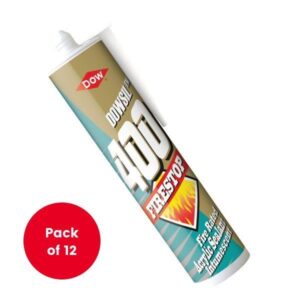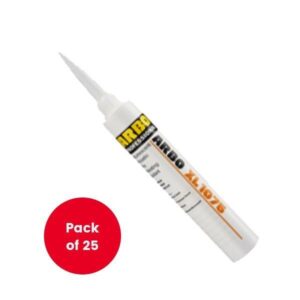What is a heat resistant sealant?
Fire resistant sealants are used to protect buildings by containing toxic fumes, smoke and fire within a limited space over the course of up to five hours, depending on their specific properties. Designed to withstand high temperatures, fire resistant sealants are usually applied in expansion joints as well as the seals between high temperature surfaces.
Why are heat resistant sealant products called “intumescent”?
The majority of heat resistant sealants are an intumescent – in other words, they swell when exposed to heat, sealing a gap or protecting the material underneath in the event of a fire. The protective substance works on the basis of a chemical reaction, meaning the insulating layer that forms will be triggered by the fire’s heat. And since intumescent sealants are poor heat conductors, they are the perfect choice for fire-proofing applications, such as fire doors.
Intumescent sealants are a practical, cost-effective fire protection and retardation solution, which can also work to prevent corrosion in steel structures, extending their life. This type of sealant is classified based on their ingredients. Heat resistant sealant that contain hydrates, for instance, prevent the spread of fire by creating a soft barrier that doesn’t conduct heat and further retards fire by releasing water vapour.
Other intumescent heat sealants decompose to form a carbon barrier or foam up to expand the protective layer which acts as a barrier against the fire. Heat resistant sealant containing sodium silicates or graphite are also used for firestopping, as they can produce a hard protective layer.
What is the difference between intumescent strips and smoke seals?
The application of heat resistant sealants can take various forms. When making fire doors, the sealant is applied in intumescent strips which are placed into rebated grooves around the door frames. This way, if a fire breaks out the strips can expand and seal the gaps between the door and the walls, containing the disaster.
Heat sealants may also act as a smoke seals. When placed on all sides of a door, they can keep harmful smoke from spreading to the rest of the building by swelling and filling up the gaps between the frame.
Often, containing fire and smoke are combined in one heat sealer application. Special brushes protruding from the intumescent strips can act as smoke seals, keeping the smoke from passing through while the sealant activates and fills the gaps.
What is an acoustic sealant?
A number of heat resistant sealants available on the market also double as acoustic sealants. Thanks to its great insulating properties, the heat sealant, when applied between two soundproofing materials, will remain permanently flexible and effectively prevent the passage of sound.
Acoustic sealants can be applied in a variety of joints – between two walls, between the ceiling/floor and the walls, or between adjacent drywall panels. The areas around windows and doors, as well as the space surrounding recessed lighting and electrical boxers, are another great place to apply heat resistant acoustic sealant.


